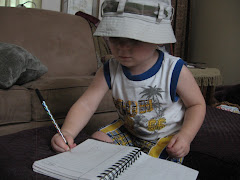The Stonewall Award, one of the newest awards in Young Adult literature, was awarded for the first time in 2010. Although only two years old, the Stonewall Award has a history going back much further. Originally known as “The Gay Book Award” when Patience and Sarah by Alma Routsong became the first recipient in 1971, the honor has had many names until most recently when it became known as the Stonewall Book Award. Books eligible for this award have characters and plots that are Gay, Lesbian, Bisexual, Transgender, and/or Questioning (GLBTQ) with characters and situations falling into one or more of these categories.
Novels with gay characters are becoming more abundant each year. GLBTQ novels fall into two general categories:
1. novels that rely on homophobia as the foil in order to make the novels realistic
2. novels that suspend reality and create a utopian world where being gay is accepted as a natural part of the society in which the novel is set
Many see the rising instances of gay characters in novels, as well as novels about the gay experience as giving voice to the gay adolescent. Thomas Crisp, assistant professor at the University of South Florida, argues, however, that there does not exist a Young Adult gay novel that does not reinforce the norms of heterosexual society, thus somewhat defeating the purpose of the novels’ supposed intent to serve as both a window and a mirror for readers. Crisp also states that publishers are, obviously, trying to reach the widest audience possible. Thus, they are likely to publish books that look progressive while maintaining relationships and power structures that are taken for granted because they fit into the heterosexual structure of what is "normal."
(For further discussion of this topic, see Thomas Crisp’s article “From Romance to Magical Realism: Limits and Possibilities in Gay Adolescent Fiction” in Children’s Literature in Education, 2009, Vol. 440, pp. 333-348).
How do kids feel about books with a gay plot and characters? Interestingly, of all the books that I discuss with my students, this topic has only come up once or twice that I can remember, and then it was only mentioned in passing. So I don’t know how students feel about gay story lines and characters who are not heterosexual trying to find their way in a homophobic society. Perhaps that is evidence in and of itself that kids who are gay are continuing to “lay low” because of the ostracism they and others continue to receive for being “different.” Do the current titles that qualify for The Stonewall Book Award” satisfy their need to feel like they are not alone? I don’t know. Do those kids even know these novels exist? Again, I’m not sure if they know, and if so, to what extent.
Some novels that fall into the GLBTQ category in different ways:
Boy Meets Boy by David Levithan (2003).
Paul is an openly gay high school sophomore who lives in a gay-friendly community. One of those novels that suspends reality, this novel follows a pretty formulaic plot line where romance is at first thwarted, best friends are offended and estranged for a time, and everything works out “happily ever after” in the end. Winner of the Lambda Literary Award, this novel is for those who don’t want to read a novel that deals with the typical topic of homophobia.
The Eagle Kite by Paula Fox (1995)
Liam’s finds out his father is dying of AIDS, but when his mother tells Liam that his father contracted AIDS from a blood transfusion he’d had a while back, Liam knew she was lying. Liam has a memory of the day he saw his father embracing a young man at the beach – the day Liam broke his eagle kite. The family falls apart amidst the secrets everyone is keeping, yet everyone seems to know, and eventually Liam’s father moved to a cottage two hours away. When Liam finally goes to visit him, they are able to begin piecing their relationship back together.
The House You Pass on the Way by Jacqueline Woodson (1997)
A typical coming-of-age novel, this story covers several issues. Evangeline “Staggerlee” Canan is thirteen-years-old, and she is the daughter of a black father and a white mother. Set mostly in an African-American community in South Carolina, she finds herself on the outside not just because she is biracial, but also because she thinks she’s gay. Through interacting with her thirteen-year-old adopted cousin Trout, she begins to feel her way through what it means to love in a place that is intolerant.
GUEST POST: Chris Baron on SPARK
7 months ago





No comments:
Post a Comment